We’ve seen them at rallies and rolling down the road, three-wheeled vehicles based on motorcycles that are referred to as “trike conversions.” The conversion process is usually performed by a dealer and consists of substituting a differential and a pair of rear wheels for the bike’s single rear wheel, and adding appropriate bodywork. One of the major companies performing such conversions is Lehman Trikes, which cleverly proclaims itself “Leader of the Three World.” It started business in the early 1980s in Westlock, Alberta, Canada; in 2004 Lehman opened a U.S. facility in Spearfish, South Dakota.
Last fall, I spent a couple days on a Lehman Renegade trike conversion of a 2008 Harley-Davidson FLH Electra Glide Ultra Classic touring bike. Going in I was a total trike novice, so I first viewed Lehman’s eight-minute video that is shown to demo ride participants. It did a good job of preparing me for what I was about to experience. For example, I learned that the trike’s front end was going to wiggle at low speeds over bumps, that I would have to muscle it in slow turns, and that with its dual rear disc brakes (it has Wilwood two-piston calipers on automotive tires) the braking force available from the rear would be huge.
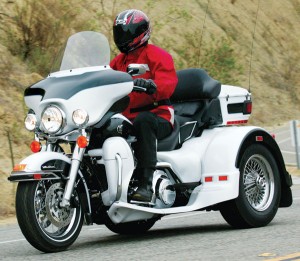
The full fiberglass Renegade body includes fenders, a lower 5-cubic- foot trunk, and it utilizes the Harley TourPak trunk that comes with the bike, so there’s ample storage. I had just finished testing the 2008 FLH for our January issue, and was very familiar with it. Most everything from the seat forward (except for the fiberglass “Hog EFX” running boards) is Harley-Davidson, and most everything to the rear is Lehman. The bike also carried the company’s proprietary swingarm with internal solid axle and differential.
After a brief spin around the parking lot was soon out on the road with the Renegade. There, I immediately found that while the controls (brakes, clutch and shifter) work exactly the same, a trike is vastly different from a motorcycle. With the paired rear wheels, the handlebar must be pushed and pulled forcefully to change direction at lower speeds. While I applaud Lehman’s “no-lean suspension,” its body still leans somewhat to the outside of the turn (like a car’s) so the rider has to compensate by leaning to the inside.
Because the rear wheels are both driving the machine forward, potholes and bumps that slow one rear wheel relative to the other will momentarily lever the front wheel a little to the side. This phenomenon diminishes as speed increases. At first I was disconcerted by the amount of front-end wiggle at low speeds, and how much handlebar movement and sheer grunt it took to steer this heavier vehicle in slow turns. The rig’s pronounced understeer concerned me to the point I took it to Editor Tuttle, who has considerable trike experience. He ran it around the parking lot, pronounced it fine, then showed a few jive moves by lifting the inside wheel on tight turns. My riding had been very tentative to that point, but his display convinced me that I had not even begun to explore the trike’s limits. I went back out on the roads with renewed confidence and a desire to push it around.

Soon I was confidently whipping the trike around some backroads, more sure of where I was going. While riding I was always aware that I was dealing with an 1,140-pound machine, with a lot of additional rolling friction and wind resistance. It requires more throttle and clutch slippage to start from a standstill, and if you plan to carry a passenger and pull a trailer you might consider gearing it down by changing sprockets. On a solo day ride of mostly highway miles at around the legal limit in hilly terrain, our Lehman Harley conversion turned 32.0 mpg, while the Electra Glide Classic I’d recently tested turned 38.4 mpg in more aggressive riding conditions.
The 2008 FLH carried H-D’s new optional anti-lock brakes, but because Lehman has not yet worked out how to utilize them with Wilwood’s rear brakes the ABS had been disabled. It’s the same situation with Gold Wing conversions. Still, braking force is huge.
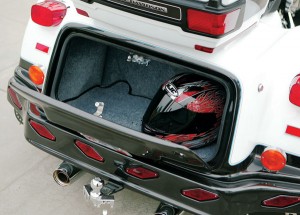
To have your own bike converted, take it to one of Lehman’s nearly 100 dealers or to the plant in Spearfish, South Dakota. Their techs will disassemble the rear portion of the motorcycle and replace it with their own swingarm, rear axle and bodywork. The differential allows the rear wheels to rotate independently relative to each other while cornering. Lehman accommodates the bike’s stock drive system so a Harley or Victory retains its belt final drive, and a Gold Wing conversion retains its driveshaft.
A conversion includes one color of your choice for paint; a two-tone treatment is extra. The conversion price starts at about $13,000 beyond the cost of the motorcycle you provide. Our bike carried a full range of options including the Hog EFX wings under the footboards, light bar, laced wheels, trailer hitch, trunk carpeting and reverse gear. We found the carpeted, 5-cubic-foot trunk extremely handy.
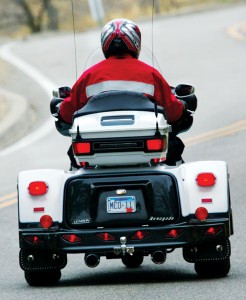
In any other situation in which the trike has to be maneuvered backward, you’ll be wishing for help. One option I highly recommend is reverse. Lehman has partnered with Baker Drivetrain, which manufactures the F6R reverse kit, a modification to the stock Harley-Davidson six-speed transmission that first appeared in 2006. With the engine running the rider flips a switch that electrically allows the reverse to be engaged. Pull in the clutch, shift to first gear, then shift down again. You feel the transmission engage another gear–reverse–and when you let out the clutch the bike begins to move backward under engine power, just as it would in any forward gear. It’s an eerie sensation at first, but works very well. When backing is completed the rider pulls in the clutch, flips the switch, lifts the shift lever with the left toe and “voila!” is immediately in first gear.
As for this motorcyclist’s view of triking, it’s certainly “easier” and more relaxing to ride a trike in terms of having your feet up all the time. I was surprised by the high amount of steering effort and movement required to turn it, though. Several companies offer raked triple clamps that purportedly will ease steering effort. Comfort was extraordinary, like driving a small convertible automobile. So what’s my advice? Attend a rally or visit a dealership and take a test ride yourself.
Lehman Trikes USA Inc. is located at 125 Industrial Drive, Spearfish, South Dakota 57783; (888) 3-WHEELS; www.lehmantrikes.com.

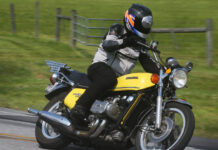
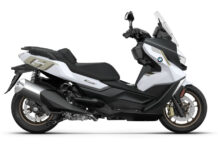
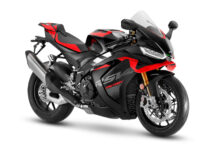





BONJOURS SUIS HANDICAPE ET RECHERCHE UN GARAGE QUI FAIT CONVERTION SUR GOLDWING AVEC KIT LEHMAN OU TOUT RENSEIGNEMENT SUR DISTRIBUTEUR DE C KIT FRANCE BELGIQUE OU EUROPE CAR BESOIN DE PIECE DE TRIKE DE CE TTE MARQUE DE KIT TRIKE MERCI DE VOTRE COMPREHANTION MERCI BEAUCOUP CAR JE N EST QUE CE VEHICULE POUR ME DEPLACER ET VU MON HANDICAPE JE SUIS BLOQUE POUR MES DEPLACEMENT COURSES VIE COURANTE EXAMENS MEDICAUX DONC C EST TRES SERIEUX